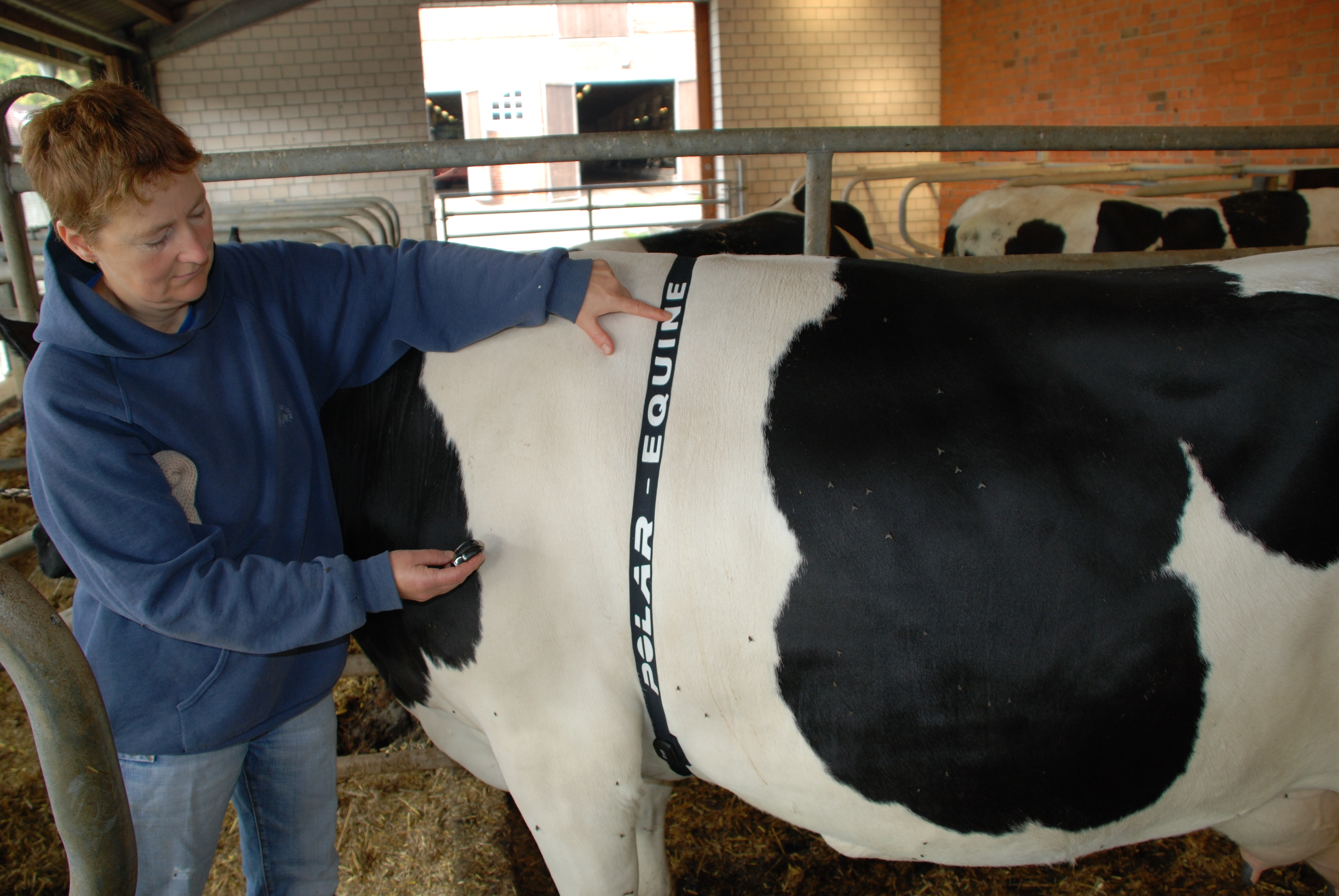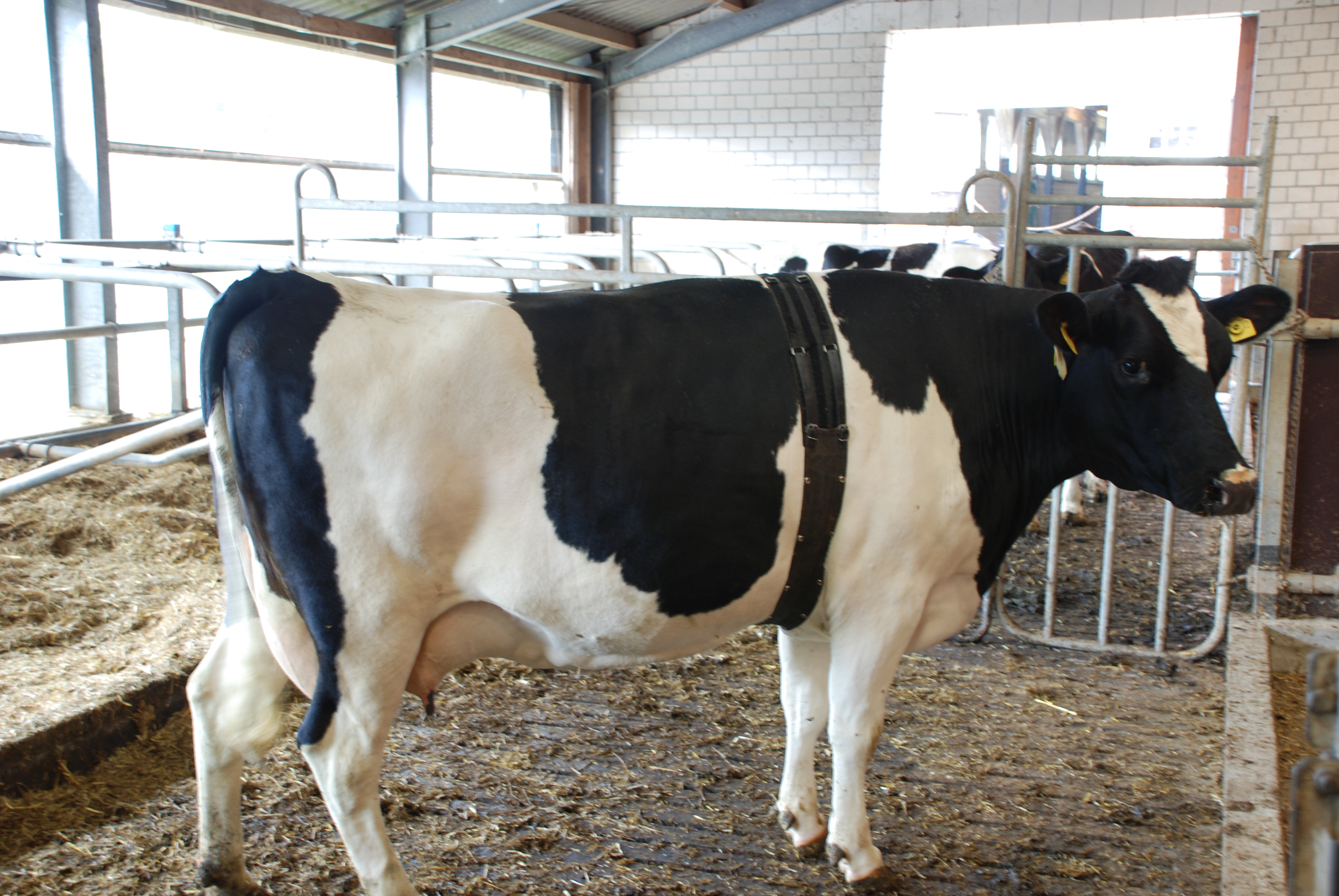Stress and health assessment
Björn Kuhla 1
Jan Langbein 1
1 Leibniz Institute for Farm Animal Biology (FBN), Dummerstorf, Germany
Introduction
The concept of ‘stress’ was developed as early as the 19th century [1]. Selye [2] provided a universally accepted definition of stress as “the nonspecific response of the body to any demand upon it”. In addition to defining stress, Selye introduced a general adaptation syndrome, containing three stages, a) recognition of the stressor stimuli; b) adaptation phase to the stimuli, and c) exhaustion phase, where stress persists and subsequently leads to organismic death. Mammals are able to engage a physiological response to any type of stress factors via two different signalling axes: the hypothalamic-pituitary-adrenal axis, through the release of glucocorticoids from the adrenal cortex and the sympathetic-adrenal-medullary axis, via initiating the release of catecholamine from the adrenal medulla. The subject of stress and animal welfare are closely related matters, as an animal reacts to stress with broad range of physiological and behavioural changes. Measurement of heart rate variability (HRV) is regarded as a non-invasive approach, in comparison with traditional cortisol assays in plasma, serum or faeces, to evaluate autonomous nervous system (ANS) activity and the functional regulatory characteristics of the ANS in response to a stress stimuli [3]. Heart rate variability is the physiological variation during a cardiac cycle [4]. In recent years, HRV has been shown to be a good indicator of stress and welfare status in farm animal research [5]. Studies have been conducted to determine different behavioural characteristics in cows by measuring HRV [5], [6]. Holter systems are used predominantly in human medicine for long term recording (up to 24 h) and storing of electrocardiograms (ECG). These systems are often combined with specific algorithms to analyse HRV. However, they are expensive and usually designed for human cardiac activity studies [3]. A more convenient approach is the use of monitoring systems which detect R-peaks of the ECG and store data in digital form. Currently, only one manufacturer (Polar Electro Oy, Finland) has developed such monitoring devices that are routinely used in sport medicine research and lately in farm animals, e.g., goats, pigs and cattle [7], [8], [9]. Dependent on the size of the animal, the device includes an electrode chest belt/particular transmitter and two coated electrodes that can be fitted around the thorax. The interval beats will be detected during recording and the data transmitted wirelessly and stored in a data logger. Data may then be downloaded onto a computer for later analysis of HRV.
Oxidative stress in mammals occurs as a result of an imbalance between antioxidants and oxidants, where oxidants exceeds the neutralising capacity of antioxidants [10]. Several factors such as body condition score at parturition, high milk yield, negative energy balance and diet can increase the oxidative stress level in cattle, particularly dairy cows [11]. Oxidative stress in cattle cannot be diagnosed with clinical symptoms; however, the condition can be diagnosed by means of chemical-analytical methods. Typically, the oxidative stress level in animals can be assessed by quantifying oxidative and antioxidative metabolites in blood and plasma. Researchers have recently introduced more innovative methods, such a miniaturised spectroscopic system (MSS), which can be exploited in animal research [12]. An LED-based MSS can noninvasively determine the carotenoid concentrations in cattle's udder skin (measurements based on reflection spectroscopy), however, more studies are needed to validate this system in cattle.
Heart rate and heart rate variability
Prerequisites
This guideline provides information on measuring heart rate (HR) and heart rate variability (HRV) in primi- or multiparous cattle and calves. The guideline assumes that a Polar device (Polar Electro Oy, Finland) is used, which can register both the HR and individual R–R (beat to beat) intervals to asses HR and HRV. The Animal Trait Ontology (ATOL) and Environment Ontology (EOL) numbers linked with this guideline are: ATOL_0002301, ATOL_0000796, ATOL_0001554, ATOL_0000765, ATOL_0000945, ATOL_0000834, AHOL_005002, AHOL_0005011, EOL_0001712 and EOl_0000306 (for complete list, please visit https://www.atol-ontology.com/en/erter-2/).
Steps on preparation, recording and analysing HRV data
- The operator can use HRV measurements to gain deeper understanding of cow/calf welfare (particularly the immediate stress response) towards a wide range of physiological and pathological situations, as well as routine husbandry and veterinary procedures.
- The operator should be aware of potential changes in cows' and calves' HR and HRV, depending on different circumstances, such as heat stress, handling of the animal towards the milking parlour, during milking, the rearing and weaning period, chronic and infectious diseases, e.g. Bovine spongiform encephalopathy or Bovine viral diarrhoea, isolation from the herd, or being introduced to a new grouping pen (unless the intention of the trial is to understand the impact of these factors).
- The measuring belt, electrodes and data logger should be checked to ensure they are functioning properly.
- The animal should be accustomed to the measuring belt in separate sessions for at least 1–2 d prior to measurement.
- The animal is not required to be shaved for installing the equipment. However, ample electrode gel must be applied prior measurement (especially when measurements are longer than 2 h).
- Electrodes should be positioned on the left side of the chest with one electrode placed close to the sternum and the other over the right scapula. The electrode belts should be fixed around the thorax with either elastic strap (for calves) or strong girths (for adult cattle, see Figure 1). Where the animal is measured in the barn/paddock, an extra protective belt is necessary so that other cows cannot damage the electrode belt (see Figure 2).
- During the measurement period, staff members must avoid any unnecessary contact with cows which may result in disturbance and produce false data.
- The operator should be aware of possible artefacts in the data as a result of poor electrode-skin conductance, equipment malfunction, noises from muscle action potentials and environmental electromagnetic interference during recording.
- When calculating heart rate periodicity/variability, baseline HR data should be recorded roughly 20–30 min before the experiment, or an average HR value from data recorded at different times of the day should be calculated.
- Analysis of an animal's HRV based on inter-beat interval (IBI) data, the parameter that HRV is based on, should be conducted in 5-min segments to minimise difficulties (e.g. non-stationary data) encountered with longer segments of data.
- The operator should take every physical activity of the cow into account in the final interpretation of HRV data. The correction formula or algorithm must be clearly stated in the final report/manuscript.
- Any IBI data, which contains more than 5% anomalies or segments of IBI encompassing >3 consecutive errors, should not be included in HRV analysis [3].
- The interpolation/correction procedure of detected errors by the HRV data analysis software must be clearly stated.
- Connecting various segments of IBI data that do not follow each other or are separated by gaps of missing data should not be done, as this can disturb the underlying time series of the data in the final analysis.


Reflection spectroscopy for oxidative stress assessment
Prerequisites
This section focuses on a method of dermal carotenoid measurement in cows/heifers. The guideline assumes that a hand-held miniaturized spectroscopic system (MSS) will be used to measure the oxidative status of dairy cattle. The Animal Trait Ontology (ATOL) and Environment Ontology (EOL) numbers linked with this guideline are: ATOL_0002301, ATOL_0000088, ATOL_0000132, ATOL_0000537, AHOL_0005001, EOL_0000066 and EOL_0001903 (for complete list, please visit https://www.atol-ontology.com/en/erter-2/).
Steps on measuring carotenoids concentration using MSS
- Dermal carotenoid concentration in cattle can be measured as an oxidative marker.
- The operator should be aware of factors such as illness, environmental stressors, feed composition, breed, age, or stage of lactation, that can influence the carotenoid level of animal.
- Animals should be kept in individual stalls and fed the same dietary ration before measurement, unless the intention of experiment is to observe the impact of a dietary change. The cows/heifers involved in the carotenoid measurement study should not have received any medical treatment for at least 2–4 months prior to the trial.
- The readings from the MSS should be validated (as a preliminary study) against Raman spectroscopy (the ‘gold standard’ method of dermal carotenoid determination). An area of skin on the cow should be marked (roughly 0.8 cm2) and the centre of this area used to measure the carotenoid concentration with either MSS or Raman spectroscopy (range between 440 nm and 490 nm to be used as a source of excitation). To capture a reading for data validation both the MSS and Raman spectroscopy tool should be in full contact with the skin to exclude the impact of outside light on final results.
- A minimum of 3 sites (pre-determined) on the udder should be chosen for measuring with MSS. The sites should be at least 10–12 cm above the base of the teat. The chosen sites require careful shaving (avoiding any injuries to the stratum corneum) before measurement. See Klein [13] for a more detailed description.
- Measurements should be taken in triplicate (at a minimum) at each site.
- The operator can measure the carotenoid level using the MSS tool on the same animal, on the same skin area, for up to one month (sampling once/week) or for 4 consecutive days, without any considerable deviation of the collected data [12].
References
[1] Goldstein DS, Kopin IJ. Evolution of concepts of stress. Stress. 2007;10(2):109-20. DOI: 10.1080/10253890701288935[2] Selye H. The evolution of the stress concept. Am Sci. 1973;61:692-9.
[3] von Borell E, Langbein J, Després G, Hansen S, Leterrier C, Marchant-Forde J, et al. Heart rate variability as a measure of autonomic regulation of cardiac activity for assessing stress and welfare in farm animals — A review. Physiol Behav. 2007;92(3):293-316. DOI: 10.1016/j.physbeh.2007.01.007
[4] Bobkowski W, Stefaniak ME, Krauze T, Gendera K, Wykretowicz A, Piskorski J, et al. Measures of Heart Rate Variability in 24-h ECGs Depend on Age but Not Gender of Healthy Children. Front Physiol. 2017;8:311. DOI: 10.3389/fphys.2017.00311
[5] Kovács L, Kézér FL, Tőzsér J, Szenci O, Póti P, Pajor F. Heart Rate and Heart Rate Variability in Dairy Cows with Different Temperament and Behavioural Reactivity to Humans. PLoS One. 2015;10(8):e0136294. DOI: 10.1371/journal.pone.0136294
[6] Johns J, Patt A, Hillmann E. Do Bells Affect Behaviour and Heart Rate Variability in Grazing Dairy Cows? PLoS One. 2015;10:e0131632. DOI: 10.1371/journal.pone.0131632
[7] Hagen K, Langbein J, Schmied C, Lexer D, Waiblinger S. Heart rate variability in dairy cows—influences of breed and milking system. Physiol Behav. 2005;85(2):195-204. DOI: 10.1016/j.physbeh.2005.03.019
[8] Marchant-Forde RM, Marchant-Forde JN. Pregnancy-related changes in behavior and cardiac activity in primiparous pigs. Physiol Behav. 2004;82(5):815-25. DOI: 10.1016/j.physbeh.2004.06.021
[9] Langbein J, Nürnberg G, Manteuffel G. Visual discrimination learning in dwarf goats and associated changes in heart rate and heart rate variability. Physiology & Behavior. 2004;82(4):601-9. DOI: 10.1016/j.physbeh.2004.05.007
[10] Kurutas EB. The importance of antioxidants which play the role in cellular response against oxidative/nitrosative stress: current state. Nutr J. 2016;15:A71. DOI: 10.1186/s12937-016-0186-5
[11] Celi P, Gabai G. Oxidant/Antioxidant Balance in Animal Nutrition and Health: The Role of Protein Oxidation. Front Vet Sci. 2015 Oct 26;2:48. DOI: 10.3389/fvets.2015.00048
[12] Klein J, Darvin ME, Muller KE, Lademann J. Serial non-invasive measurements of dermal carotenoid concentrations in dairy cows following recovery from abomasal displacement. PLoS One. 2012;7:e47706. DOI: 10.1371/journal.pone.0047706
[13] Klein J, Darvin ME, Muller KE, Lademann J. Noninvasive measurements of carotenoids in bovine udder by reflection spectroscopy. J Biomed Opt. 2012;17(10):101514. DOI: 10.1117/1.Jbo.17.10.101514




